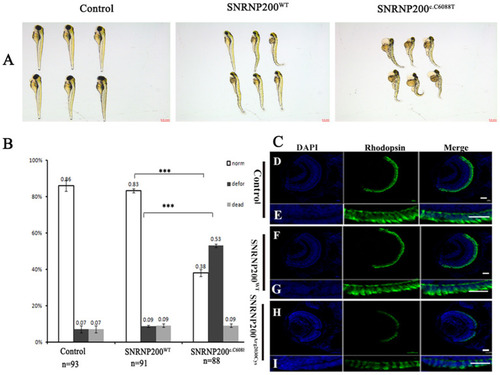- Title
-
SNRNP200 Mutations Cause Autosomal Dominant Retinitis Pigmentosa
- Authors
- Zhang, T., Bai, J., Zhang, X., Zheng, X., Lu, N., Liang, Z., Lin, L., Chen, Y.
- Source
- Full text @ Front Med (Lausanne)
|
Clinical information of this adRP family. |
|
Genetic analyses of variants identified in the SNRNP200 Gene and its expression of SNRNP200 in cadaver eye tissues. |
|
The expression of SNRNP200 in zebrafish. Whole mount |
|
Detrimental effects of SNRNP200 p.Arg2030Cys in zebrafish. |
|
Phenotypic comparison among zebrafish larvae with SNRNP200 silencing, and with overexpression of SNRNP200WT, or SNRNP200c.C6088T. PHENOTYPE:
|





